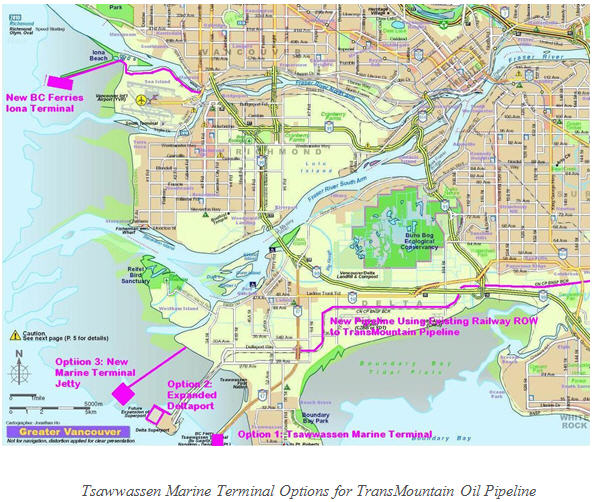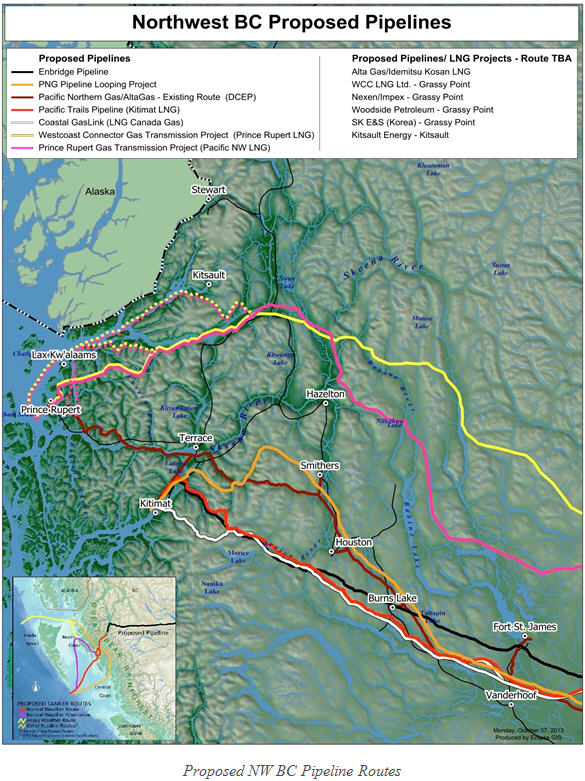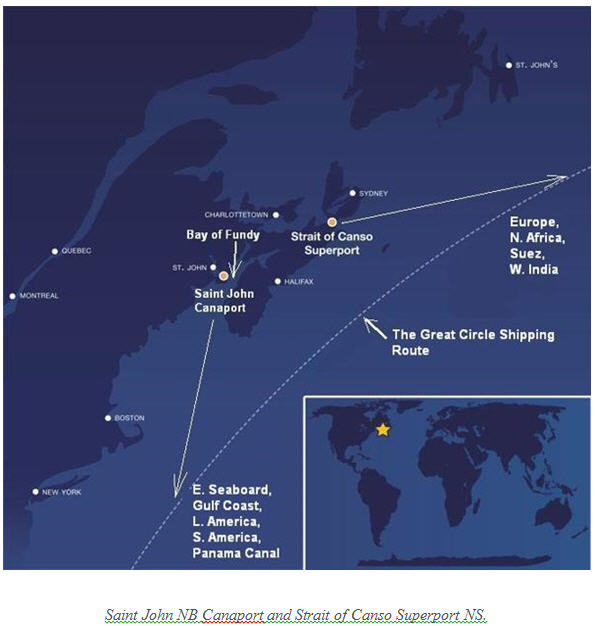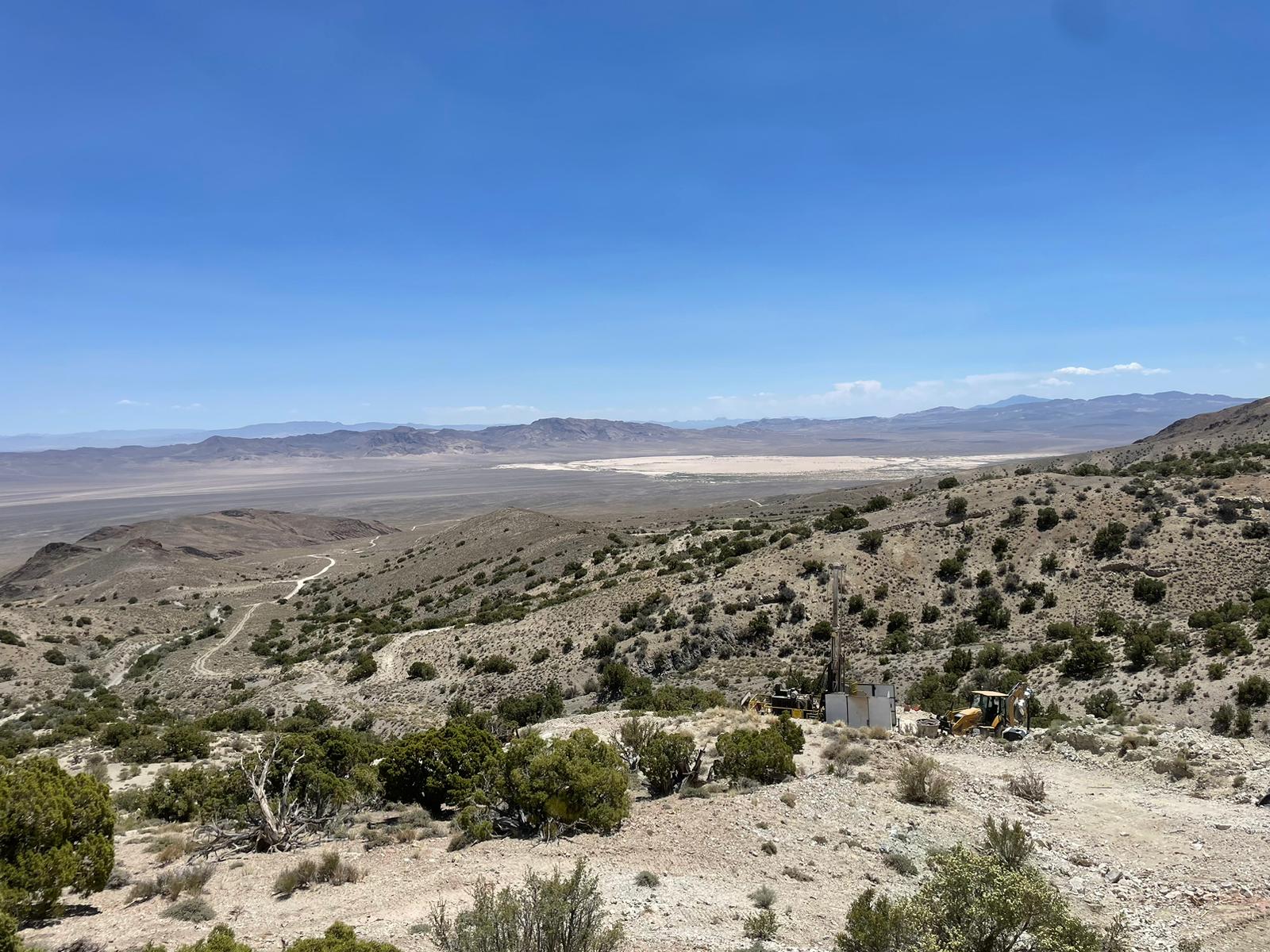An energy policy for a New Alberta
It’s not just the pipeline, but what’s in it!
Objective analysis, and some not very difficult math, indicates there is no physical need, economic justification, environmental acceptability, or social licence for either the Keystone XL or Northern Gateway pipeline proposals.
Almost everyone agrees Alberta must obtain oil pipeline export capacity to markets other than the US where almost all of Alberta’s oil production currently goes. That, and objection to what’s in it –dilbit, are Keystone XL’s fatal flaws.
One of Northern Gateway’s fatal flaws is that its proposed Kitimat terminal at the head of Douglas Channel is the most environmentally-unacceptable port to handle large dilbit tankers on the west coast. The other is that many BC First Nations’ adamant opposition to any pipeline transporting dilbit through their lands means Northern Gateway is effectively dead.
In contrast, Calvin Helin’s Eagle Spirit Energy Holdings Ltd. proposal for a First Nations-supported pipeline is designed to transport one million barrels per day (bbl/d) of partially-upgraded bitumen and heavy crude, syncrude, and conventional crudes to Grassy Point near Prince Rupert –perhaps the safest port on the west coast. See: https://www.behance.net/gallery/19947719/EAGLE-SPIRIT-PIPELINE-PROSPECTS-SOARING
Helin, an attorney, entrepreneur, businessman, activist, motivational speaker, and author, is president of the Native Investment and Trade Association and a director of the Vancouver Board of Trade and the Canada-China Resource Development Foundation. He grew up as a member of the Lax Kw’alaams Band of the Tsimshian First Nation near Prince Rupert BC.
Prince Rupert is widely regarded as one of the safest locations for a marine terminal on Canada’s west coast and is the shortest trade route between North America and markets in Asia. It is sheltered and ice-free year round, has one of the deepest natural harbours in the world, and has modern, state-of-the-art facilities. It has unobstructed entry to shipping lanes of the northern Pacific Great Circle Shipping Route and there are no significant hazards such as narrow channels to navigate.
Eagle Spirit already has backing and expression of financial support from Vancouver’s Aquilini Investment Group Inc., owners of the Vancouver Canucks. And according to the Financial Post, David Tuccaro, the founder, president and CEO of Tuccaro Inc., a treaty Indian from Fort Chipewyan AB and likely Canada’s most successful aboriginal entrepreneur, is a leading backer of the Eagle Spirit proposal.
The proposed 590,000 bbl/d expansion of the TransMountain pipeline to Canada’s west coast is acceptable only if it transports partially-upgraded bitumen, syncrude, conventional crudes, and refined products, but no dilbit, to a new marine terminal at Tsawwassen. A large increase in dilbit tanker traffic through Vancouver’s harbours is a non-starter as are expanded dilbit pipeline, marine terminal, tank farm, and refining operations in Burnaby. See: https://www.behance.net/gallery/16416411/TRANSMOUNTAIN-PIPELINE-EXPANSION-FATALLY-FLAWED
A dedicated energy/economic corridor containing one or more natural gas pipelines to LNG terminals at Prince Rupert in the same ROW as the Eagle Spirit proposal addresses First Nations’ and environmentalists’ concerns. Utilizing the same ROW for several pipelines will save producers billions in pipeline costs and minimizes land and water disturbances of several separate proposed pipeline routes.
TransCanada’s Energy East pipeline is designed to transport 1.1 million bbl/d of oil to Saint John NB.
Extended to Canso NS –the safest, most environmentally-acceptable port in mainland Atlantic Canada, it would provide access to markets in the US eastern seaboard for refined products and petrochemicals from Saint John, and to Europe and India for crude oil from Canso. See: https://www.behance.net/gallery/14530077/ENERGY-EAST-PIPELINE-TO-CANSO-NS-A-STRONG-CASE
There is also potential for an Energy East Line 2 to carry an additional 1.1 million bbl/d in the same right-of-way (ROW). See: https://www.behance.net/gallery/24651283/ENERGY-EAST-AND-MONTREAL-PIPELINE-HUB
Current capacity of existing pipelines to ship Alberta oil to the US is 3.7 million bbl/d. The Eagle Spirit, TransMountain, and Energy East Line 1 and 2 proposals provide additional capacity of 3.8 million bbl/d. At least another million bbl/d of pipeline capacity is available by eliminating dilbit in existing export pipelines, by reversing diluent import pipelines to export oil, by completing expansion of Enbridge’s Mainline system to the US (which makes Keystone XL redundant), and by rail transport for oil exports. Adding these figures yields oil export capacity of 8.5 million bbl/d –more than enough to satisfy Alberta’s needs beyond 2030 without Northern Gateway, and without Keystone XL.
This program of east and west pipeline corridors hinges on partial-upgrading which eliminates transportation and export of environmentally- and economically-unacceptable raw bitumen as dilbit.
Partial-upgrading of raw bitumen can be done for a small fraction of the cost of full upgrading to syncrude. It eliminates diluent costs, adds value to raw bitumen, provides domestic jobs, improves economics of domestic refining, and reduces transport costs, green-house gas (GHG) emissions, and environmental risk and liability incurred by transporting dilbit and diluent. It may also provide opportunity to increase bitumen recovery factors and greatly reduce GHG emissions by allowing recycling of proprietary solvents to replace steam required by thermal projects. See: https://www.behance.net/gallery/16058487/PARTIAL-UPGRADING-OF-ALL-RAW-BITUMEN-IN-ALBERTA
The currently-allowed deduction for diluent costs in Alberta royalty calculations reduces royalties and effectively subsidizes the export of low-value raw bitumen, jobs, and profits. Eliminating this costly subsidy by Alberta taxpayers effectively increases royalties without increasing royalty rates.
Innovative partial-upgrading will not just provide a significant improvement in environmental performance and social licence for oil sands producers, but may even result in a net cost savings for some producers, while providing a significant improvement in economics for all Albertans.
Domestic east and west pipeline corridors and partial-upgrading must be top energy policy priorities for Alberta’s new NDP government.
Mike Priaro, P.Eng.
{{ commodity.name }}
{{ post.title }}
{{ post.date }}





Comments